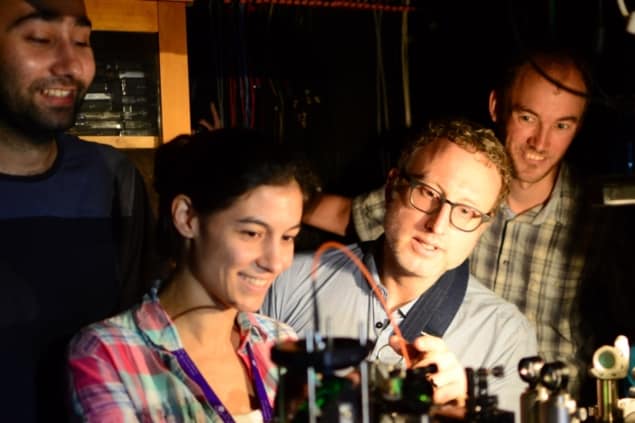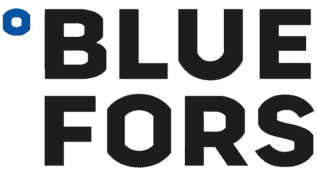
Last month, Physics World reported on a campaign to make 2025 the official UN International Year of Quantum Science and Technology. Although we wish the campaigners well, here at the magazine’s socially-distanced HQ we’ve already found plenty to celebrate in 2021, thanks to researchers around the world. Here are a few highlights.
Quantum-secure Zoom calls (almost)
For April Fool’s Day 2021, Physics World dipped into the pandemic zeitgeist and published a made-up story about a Zoom call running on a quantum computer. A few months later, the joke was kind of on us after researchers in the UK and Germany used quantum entanglement to securely distribute secret keys among multiple users in a network – an achievement that could pave the way for quantum-secure Zoom calls. During their 177-hour experiment, physicists at Heriot-Watt University and Heinrich-Heine-Universität Düsseldorf generated a secure key containing over a million bits and used it to securely share an image between four users in a network. This being the Internet, the image contained a cat – specifically, the Cheshire cat from Lewis Carroll’s Alice’s Adventures in Wonderland.
Putting chemistry to a quantum test
Although quantum computing soaks up most of the commercial attention (and the lion’s share of the venture capital funding), there’s a broad consensus within the quantum community that quantum simulation – that is, using simple quantum systems to probe complex phenomena in chemistry, condensed-matter physics and materials science – offers the greatest near-term advantages for pure research.
The work of Kang-Kuen Ni offers a taste of what that advantage look like. In May, Ni and colleagues at Harvard University in the US reported that they had cooled molecules of potassium and rubidium down to a fraction of a degree above absolute zero, thereby reducing the number of possible chemical reactions between the molecules from essentially infinite to just 57. In a tour-de-force series of experiments, they then followed each of these Heinz 57 varieties of reaction to its conclusion and measured its probability. While 50 of these probabilities matched theoretical predictions, the other seven didn’t – a fascinating result heralding new possibilities in quantum chemistry.

Using quantum entanglement to reveal biological structures
Stimulated Raman scattering (SRS) is widely used to image biological tissues at the molecular scale. In June, researchers in Australia and Germany gave SRS a quantum upgrade, significantly reducing the noise in their imaging system by replacing ordinary photons with entangled ones in so-called “squeezed-amplitude” quantum states. The new approach enabled Warwick Bowen and colleagues to observe biological structures that could not otherwise be resolved. The researchers also detected molecular samples at 14% lower concentrations than were previously possible, without the need to crank up the optical power of their imaging laser, which can damage delicate biological structures.
Quantum advantage gets even more advantageous
Towards the end of last year, researchers led by Jian-Wei Pan and Chao-Yang Lu at the University of Science and Technology of China (USTC) made headlines by showing that their optical circuit could perform a quantum operation called Gaussian boson sampling 1014 times faster than an ordinary supercomputer. In October 2021, the group went one better – or rather, a factor of 1010 better, with new results indicating that an improved version of the circuit could perform the same sampling task a staggering 1024 times faster than a classical machine. That same month, a second team led by Pan also demonstrated quantum advantage on a more conventional type of quantum computer, one that uses 66 superconducting transmons as qubits. We look forward to seeing what further milestones the USTC team (and its competitors) will pass in 2022.

Time crystals, times two
Breakthroughs in time crystal research are like buses: you wait ages for one, only for two to come along at once. In early November, a team of physicists from QuTech, the University of California, Berkeley and Element Six showed that nuclear spins in diamond could constitute a specialized version of a time crystal – that is, a system that exhibits periodicity in time, just as crystalline materials are periodic in space.

A year of quantum highlights
A few weeks later, a separate group led by researchers at Google and Stanford University published their own time crystal result, demonstrating that these exotic quantum objects constitute a non-equilibrium phase of matter. Intriguingly, the latter group used Google’s Sycamore quantum processor to put its time-crystal candidate through its paces, rigorously checking that it met all the requirements – a fine example of an early-stage quantum device acting as a testbed for studying condensed-matter systems.
Keeping quantum weird
No list of quantum highlights would be complete without a few results to remind us just how wonderfully strange the quantum world can be. In 2021, we learned, inter alia, that quantum thermodynamics limits the precision of nanoscale mechanical clocks; that complex quantum operations obey a speed limit of 17 millimetres per second; that an ensemble of just six atoms can exhibit collective behaviour; that quantum properties can become detached from their parent object and wander into regions where the object itself never travelled; and finally, gloriously, that if you throw information into a black hole, not even a quantum computer can help you get it out again.
As the year 2021 slinks off into the past, let us rejoice that some things about it, at least, were worth remembering.

Physics World‘s Breakthrough of the Year coverage is supported by Bluefors, a leading supplier of cryogen-free dilution refrigerator measurement systems with a strong focus on the quantum computing and information community. Our aim is to deliver the most reliable and easy to operate systems on the market which are of the highest possible quality.
